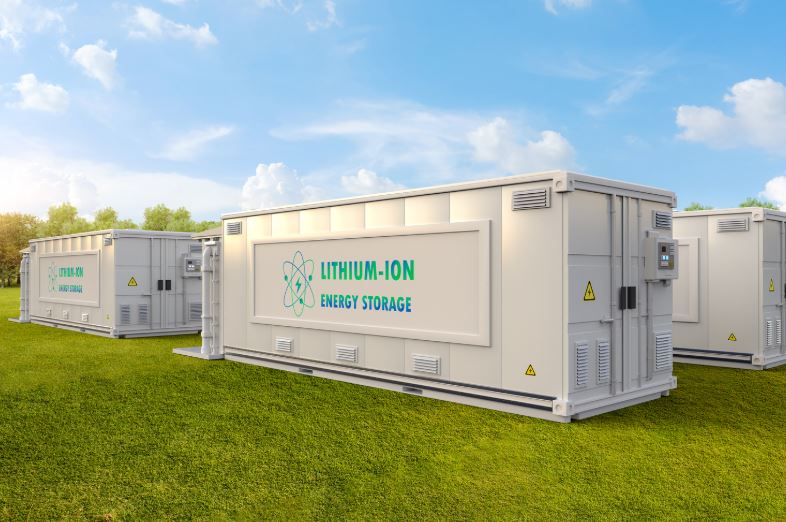Australian energy storage manufacturer PowerCap enters the European market with sodium-ion battery systems priced at €500 per kWh, targeting Italy, Germany, and Spain as initial deployment markets. The company’s 5 GWh manufacturing capacity and established Australian distribution network provide an operational foundation for continental expansion, though market acceptance remains contingent on performance validation against established lithium-ion alternatives.
Technical Specifications and Performance Parameters
PowerCap’s residential POD systems offer modular capacity scaling from 10.30 kWh to 27.46 kWh through three to eight battery units configured in parallel. The technology delivers 8,000 charge-discharge cycles at 25°C operating temperature with 0.5°C charging rates, maintaining energy retention above 70% throughout the warranty period. Operating temperature ranges extend from 0-55°C during charging and -20 to 60°C during discharge phases, with IP65 environmental protection and natural cooling systems.
Commercial and industrial configurations scale from 53.76 kWh to 115.20 kWh across seven to 15 battery pack configurations. These systems provide 6,000 cycles with 80% energy retention or 10,000 cycles maintaining 70% capacity, operating within expanded temperature parameters of -40 to 60°C during discharge. The C&I products feature fan cooling systems and IP20 protection ratings designed for controlled indoor environments.
Battery Management System Development Challenges
PowerCap’s technical differentiation centers on proprietary battery management system (BMS) and energy management system (EMS) development, addressing sodium-ion technology’s primary market barriers. General Manager Chris Dryden identifies BMS compatibility and inverter integration as critical obstacles preventing sodium-ion mainstream adoption. The company invested two years developing these control systems to enable safe operation and performance optimization.
Inverter compatibility spans multiple manufacturers, including Sungrow, GoodWe, Sofar, DEYE, and Sinexcel platforms, though this represents a subset of the broader European inverter ecosystem. Limited inverter compatibility could constrain installation flexibility and increase system integration complexity compared to established lithium-ion products with broader manufacturer support.
Market Positioning and Competitive Dynamics
The €500 per kWh pricing positions PowerCap’s sodium-ion technology competitively within current European energy storage markets, though direct cost comparisons with lithium-ion systems require consideration of performance differentials. Sodium-ion batteries typically offer lower energy density than lithium alternatives, potentially requiring larger installation footprints for equivalent energy capacity.
Safety advantages constitute the primary value proposition, with sodium-ion chemistry eliminating thermal runaway risks associated with lithium-ion systems. However, quantifying safety premiums in commercial markets requires incident cost data and insurance implications that remain underdeveloped for comparative analysis.
Manufacturing Scale and Supply Chain Considerations
PowerCap’s 5 GWh annual manufacturing capacity provides a substantial production foundation for European market entry, though scaling requirements depend on demand materialization across target markets. The company reports 500 pre-registrations for European product availability, indicating preliminary market interest while highlighting the gap between inquiry volume and committed orders.
Australian market success provides operational validation, with established distributor networks and major enterprise deployments demonstrating commercial viability. However, European market dynamics differ significantly in regulatory frameworks, installer preferences, and competitive landscapes, requiring adapted go-to-market strategies.
European Renewable Energy Integration Context
Europe’s renewable energy expansion creates storage demand drivers that could support sodium-ion technology adoption. Grid stabilization, virtual power plant integration, and micro-grid applications represent growing market segments where safety characteristics and cycle life performance align with operational requirements.
The initial focus on Italy, Germany, and Spain targets markets with substantial solar deployment and supportive storage policies. Germany’s energy transition policies and Italy’s renewable incentive structures provide regulatory environments conducive to storage adoption, though competitive intensity from established lithium-ion suppliers remains high.
Technology Maturity and Scalability Assessment
Sodium-ion battery technology addresses resource availability concerns through abundant sodium supplies compared to lithium constraints. PowerCap’s 100% recyclability claims support circular economy principles, though end-of-life processing infrastructure remains underdeveloped compared to established lithium recycling networks.
The 15-year warranty period indicates confidence in technology durability, though field performance validation over extended periods remains limited compared to lithium-ion systems with decades of operational data. Long-term degradation patterns and maintenance requirements require additional validation as deployment scales increase.
Distribution Strategy and Market Penetration
PowerCap’s distribution approach combines established partners with direct installer relationships, targeting safety-conscious customers seeking alternatives to lithium-ion systems. The company secured U.S. distribution agreements and engages in early-stage European partnership discussions, indicating multi-continental expansion strategies.
Direct customer demand from installers suggests market pull dynamics, though converting inquiries into orders requires demonstration of performance advantages justifying potential cost premiums or installation complexities. The pre-registration pipeline provides demand indicators while highlighting the conversion challenges facing emerging battery technologies.
Regulatory and Certification Considerations
TÜV certification provides European market access through internationally recognized safety standards, though national-level approvals and installer certifications may require additional validation. Grid connection requirements and utility interconnection standards vary across target markets, potentially creating deployment complexity.
The modular system design enables capacity scaling to meet diverse application requirements, though installation standards and electrical codes differ across European jurisdictions. Standardized installation procedures and technical support infrastructure become critical for market penetration success.
PowerCap’s European expansion represents a significant test case for sodium-ion technology market acceptance beyond niche applications. Success depends on demonstrating performance advantages that justify adoption over established lithium-ion alternatives while building distribution networks capable of supporting technical requirements and customer education needs across diverse European markets.





